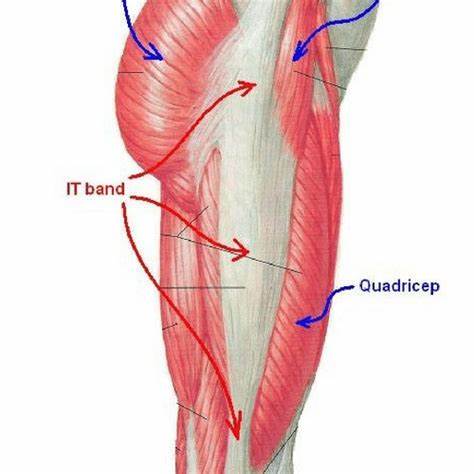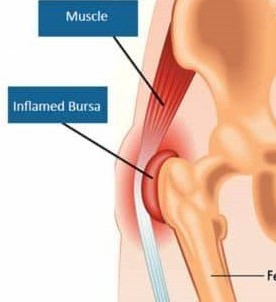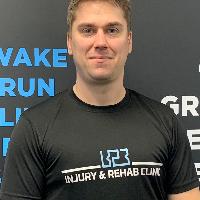A lot of people out there who know of the IT band, or Iliotibial Tract for correct terminology, more than likely know of its existence because of some sort of lateral knee or hip pain they may have suffered in the past. The purpose of this blog will be to explain to you what the IT band actually is, its' purpose and common injuries you may come across.
What is it?
The Iliotibial tract is a thick layer of fascia/tendon that sits superficially on the outside of each thigh; fascia is almost like a second layer of skin under your skin, it provides structure around tissues and helps to separate everything so they don't become entangled or mulshed together, to put simply.
The band is easy to find when feeling for it, and in some cases visible to see. It attaches from the gluteal muscle in your buttocks as well as the upper front ridge of your pelvis, and inserts at the top of the shin, or tibial tubercle, just below the outside of your knee joint. Due to the nature of the tissue, some fibres do also spread across to the fibula and surrounding areas too. The IT band in fact covers almost half of your thigh, it just has its thickest point on that outer leg area.
The location of the IT band means that it sits directly over the outside of your hip, as well as your most lateral quadriceps – vastus lateralis and outer knee. One of your hip flexing muscles attach to the IT band from start to finish known as Tensor Fascia Latae, or as I like to refer the pocket muscle due to its position under your trouser pocket. It's for this reason the IT band can also be classed as a tendon as well as a fascia.

What's its purpose?
The primary purpose of the IT band is to stabilize the hip and knee joint. This means when standing, walking, jumping or any other weight bearing activities through the hip and knee, the IT band will be in play acting as support. With muscles associated with the IT band, it also aids in movements flexion, extension, abduction, and lateral rotation of the hip. If it wasn't for our IT band structurally, we wouldn't be able to stand up straight or take footsteps without tipping to one side.
The muscles attached to the IT band to aid in movements previously mentioned, we have the Gluteus Maximus, Gluteus Medius and Tensor Fascia Latae predominantly. The Gluteus Maximus plays a big role in your hip movement so if there is any imbalance there, in strength or mobility it can really affect the rest of the kinetic chain.
Common injuries
When it comes to the IT band, there is only one injury that may even have a bigger reputation than the tissue itself, which is IT band syndrome. This injury is very common among runners especially, due to the long term repetitive impact and often a lack of strength in the tissues. What this then causes is for you to run in the most energy efficient way possible, offloading areas that have started to ache. Unfortunately the next domino to fall after that, is injury.
The IT band sits over the side of the knee, and during knee flexion/extension or hip flexion/extension it can cause rubbing over the femur leading to inflammation of the fascia. Pain on striking the floor with your foot will be sharp, and can then ache after activity.
You could also suffer with pain in the hip, directly on top of the greater trochanter of the femur (the bony part of your hip sticking out to the side). The same situation happens here where the tissue rubs against bone and generates inflammation. This can be progressed into trochanteric bursitis if ignored.

The best way to never come across any issues with the IT band if you are primarily a runner is to simply keep a good foundation of strength around the hip and core, and keep a good range of movement in your hip. If your range of movement in your hip is very limited before you start regularly running, I would recommend you address that issue first so not to get injured early into your training. Movement is always great to maintain with any activity so do keep that in mind regardless of your choice in exercise. Strength in runners is something I see almost every day as a deficit. If you run, or plan to run long distances and don't have a foundation of strength in your legs and core, you should definitely consider a consistent routine to follow either at home or a local gym. It's easy enough to put something together from my end, but if you struggle to know where to start please feel free to get in touch.
If you have started running and already have begun to feel lateral knee or hip pain it may be down to a running positional fault that needs addressing, for which I would recommend you to visit for a detailed gait analysis, take some useful information on how to help yourself day to day, some sport massage, and exercise advice you can perform in your own time.
I hope you found this useful, and if you have any questions on the subject or find you yourself may be suffering, please contact me and we can work together to iron the issue out.


